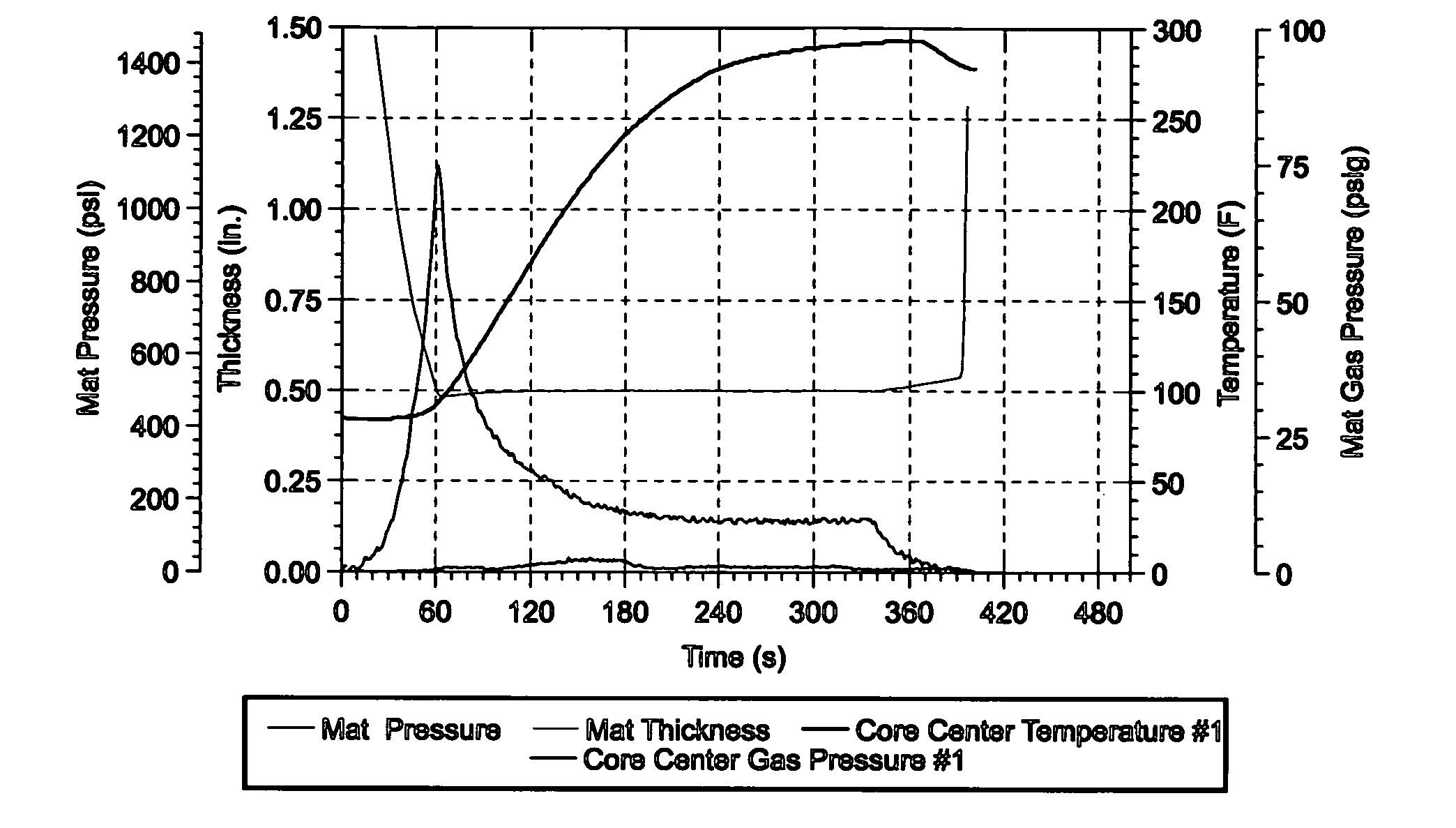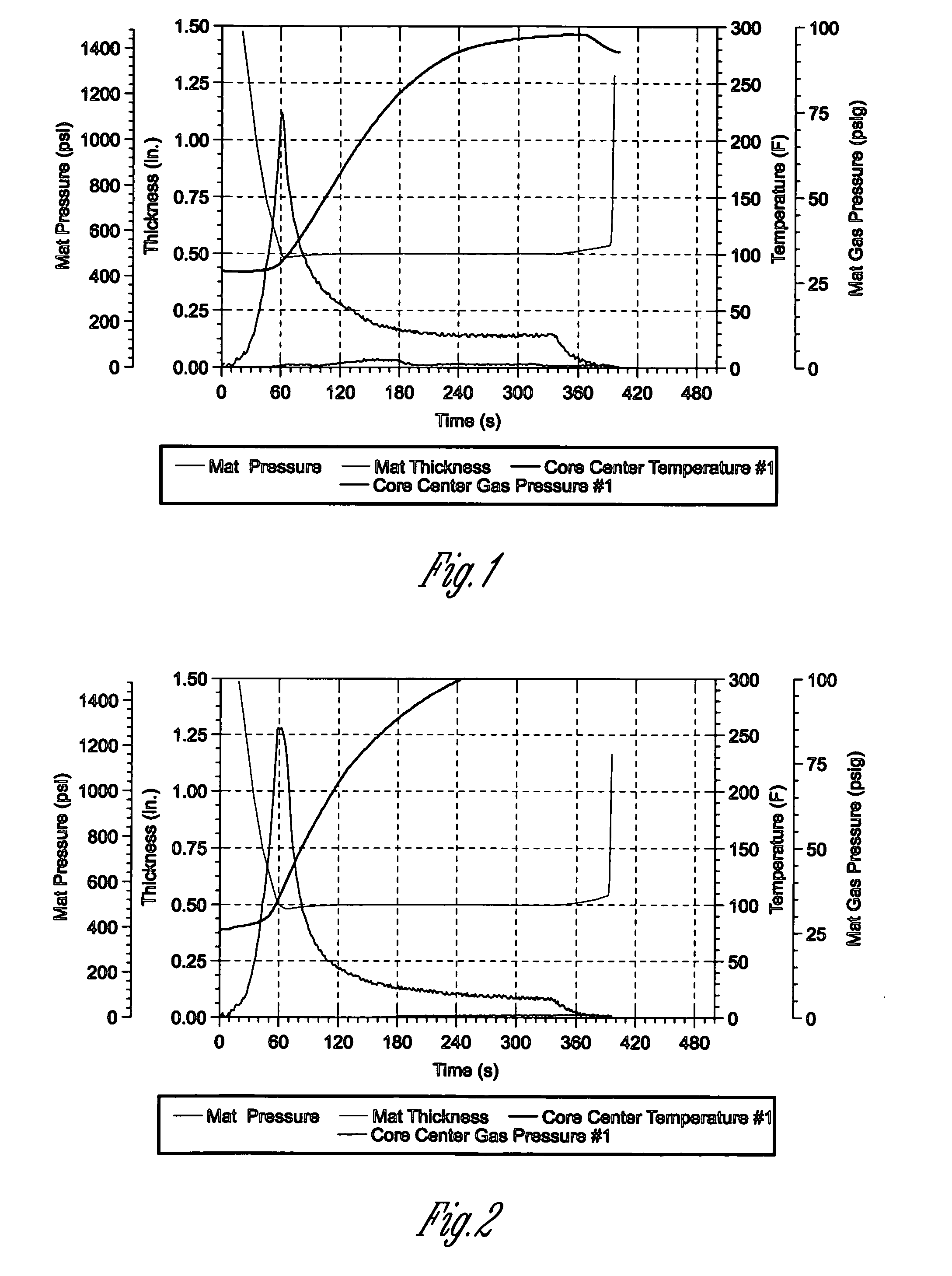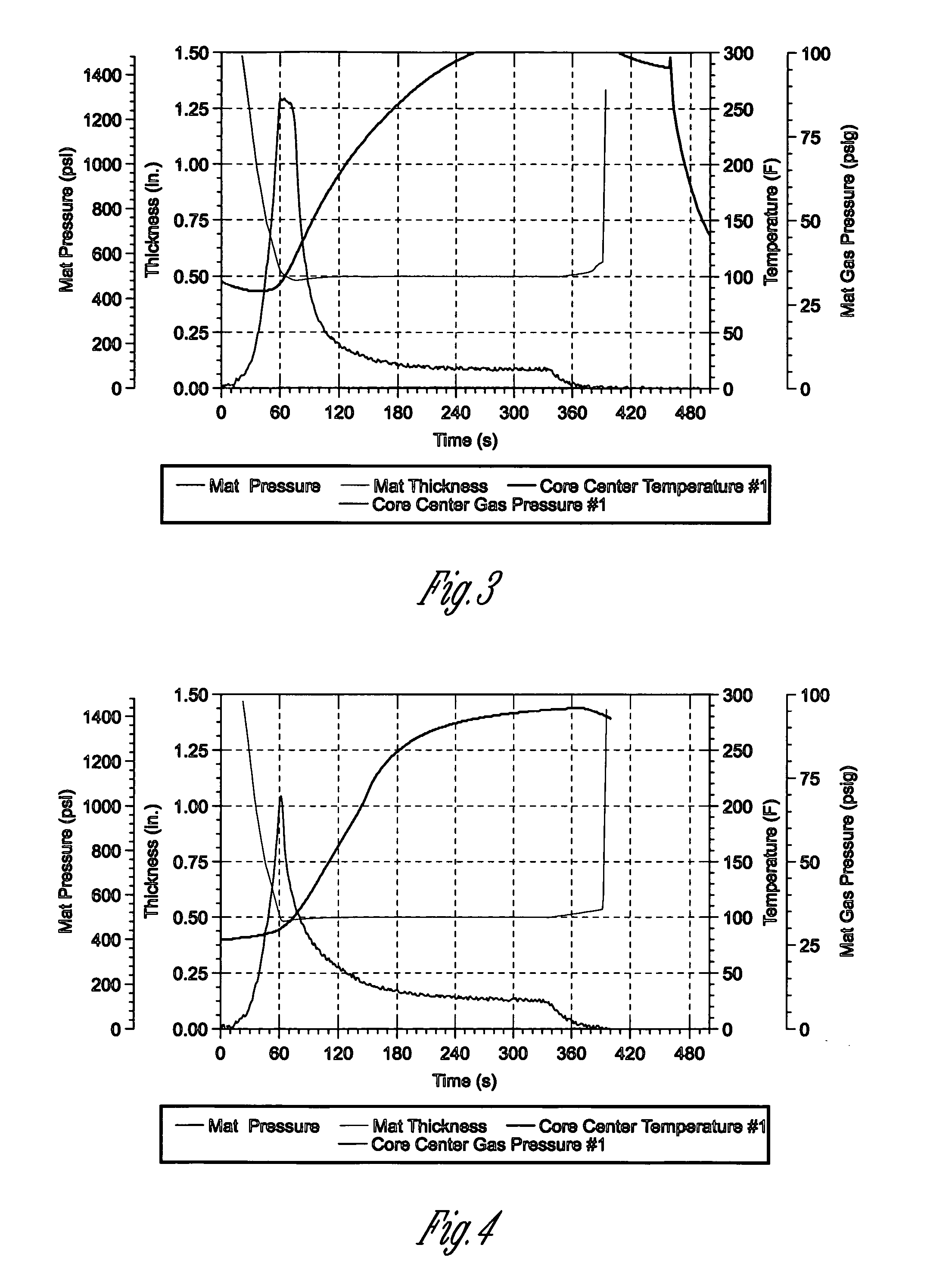Agricultural stalk strandboard
a technology of strandboard and stalk, applied in the field of strandboard for agricultural stalk, can solve the problems of insufficient forest reserves to cover the needs of fuelwood, industrial wood, sawn wood, etc., and achieve the effect of less toxic and expensiv
- Summary
- Abstract
- Description
- Claims
- Application Information
AI Technical Summary
Benefits of technology
Problems solved by technology
Method used
Image
Examples
Embodiment Construction
[0022] The present invention relates to the development of an economical, efficient, and non-toxic method of producing a structural strandboard from non-wood, plant waste materials. The strandboard can be made of any plant stalks that do not have a waxy outer cuticle, such as soybean and cotton, bagasse stalks, rice, bamboo, etc.
[0023] The first step in the process is to remove the pith from the plant stem or stalk. Removal of the pith prior to treatment is necessary since otherwise the pith will absorb most of the resin used in forming the strandboard. Various means are known in the art for depithing plant stalks, including the apparatuses described in U.S. Pat. Nos. 4,202,078 and 4,231,529, as well as use of knives, blades, pressure rollers, etc. The pith may also be removed using the machine described in the inventors' co-pending application describing a depithing machine, Ser. No. ______, the disclosure of which is hereby expressly incorporated by reference. The depithing proce...
PUM
| Property | Measurement | Unit |
|---|---|---|
| temperature | aaaaa | aaaaa |
| pressure | aaaaa | aaaaa |
| length | aaaaa | aaaaa |
Abstract
Description
Claims
Application Information
 Login to View More
Login to View More - R&D
- Intellectual Property
- Life Sciences
- Materials
- Tech Scout
- Unparalleled Data Quality
- Higher Quality Content
- 60% Fewer Hallucinations
Browse by: Latest US Patents, China's latest patents, Technical Efficacy Thesaurus, Application Domain, Technology Topic, Popular Technical Reports.
© 2025 PatSnap. All rights reserved.Legal|Privacy policy|Modern Slavery Act Transparency Statement|Sitemap|About US| Contact US: help@patsnap.com



